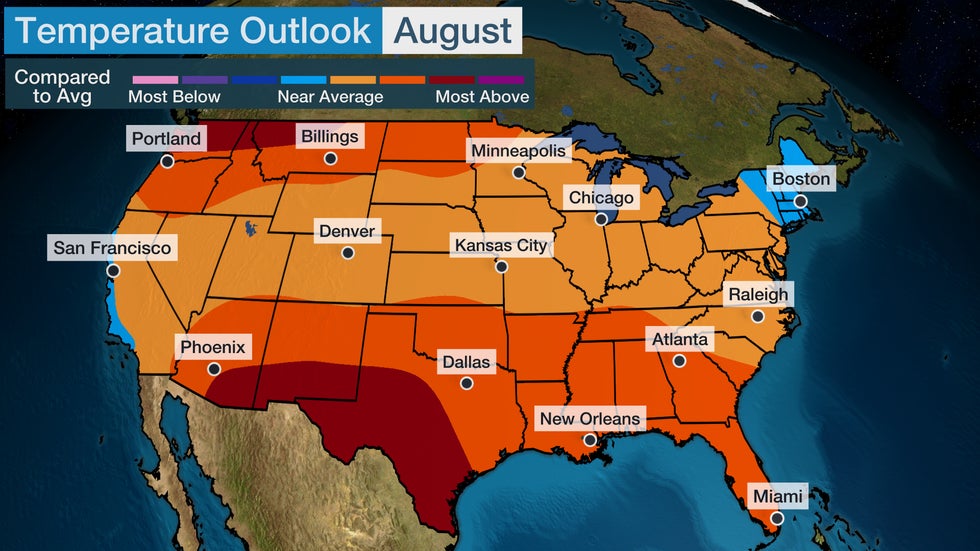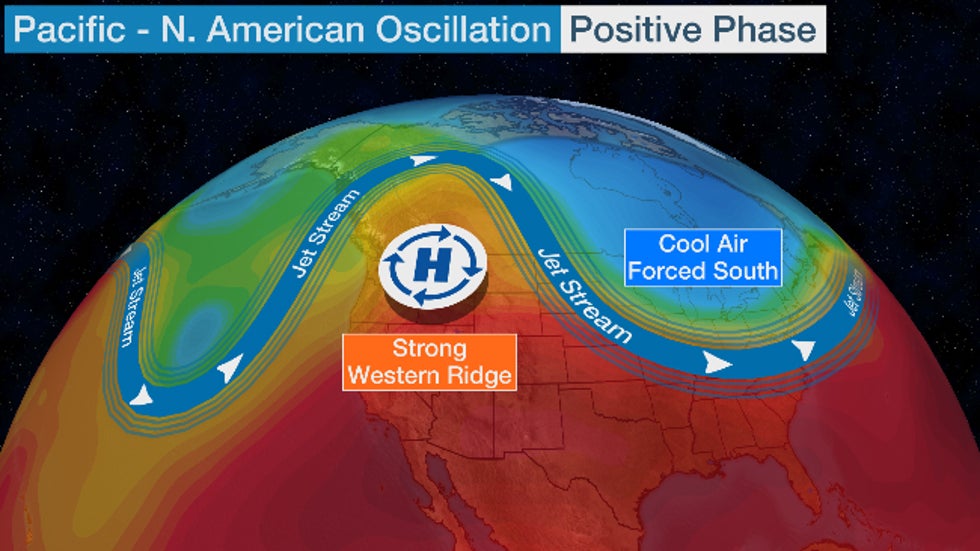weather.com meteorologists
August could see more of the same searing heat where it has been in July, with one notable exception, according to an updated outlook for the United States released Saturday by The Weather Company, an IBM Business, and Atmospheric G2.
It'll be hot in the South – again. Temperatures are expected to be much hotter than what's typical during August across the South, from Florida to Arizona. That's particularly the case from central and western Texas to southern Arizona.
(MORE: July Was Earth's Record Hottest Month | Record Tracker)
It also may be hot in the Northwest. Hotter than average temperatures are expected from parts of the Northern Plains into the Northern Rockies and Northwest. The best chance of a hotter than usual August is from northern Montana westward to Washington state.
Keep in mind these outlooks depict an overall trend for the month. We may see brief periods that are warmer or cooler in each respective region of the country when compared to what is shown below.

The Northeast could escape extreme heat. Meanwhile, parts of the Northeast, especially New England, could skew a little cooler and could be the nation's extreme heat escape in August.
"While there is some debate about the exact shape of the pattern in the dynamical models, all guidance limits the extent of the big heat into the northeast U.S., keeping it focused in parts of the central and western U.S.," said Dr. Todd Crawford, Vice President of Meteorology at Atmospheric G2 and author of the outlook.
The pattern to which Crawford is referring – the positive phase of the Pacific-North American (PNA) oscillation – typically forces heat domes over western Canada or the Pacific Northwest and, thus, plunges of the jet stream with cooler air into parts of the eastern U.S.
The central U.S. could be a mixed bag. Much of the nation's heartland is shown in the map above as near average, but slightly hotter in August.
That's because the aforementioned positive PNA pattern could bring periodic intrusions of cooler air into parts of the Plains and Midwest.
 An example jet stream pattern of the positive phase of the Pacific - North American Oscillation.
An example jet stream pattern of the positive phase of the Pacific - North American Oscillation.But there's also a threat of hotter air leaking into the central U.S. from the searing South at times.
Parched ground from an ongoing severe to exceptional drought from Kansas and Missouri into the upper Midwest may only allow the air to heat up faster, a typical feedback seen in the summer.
The Weather Company’s primary journalistic mission is to report on breaking weather news, the environment and the importance of science to our lives. This story does not necessarily represent the position of our parent company, IBM.
The Weather Company’s primary journalistic mission is to report on breaking weather news, the environment and the importance of science to our lives. This story does not necessarily represent the position of our parent company, IBM.

No comments:
Post a Comment